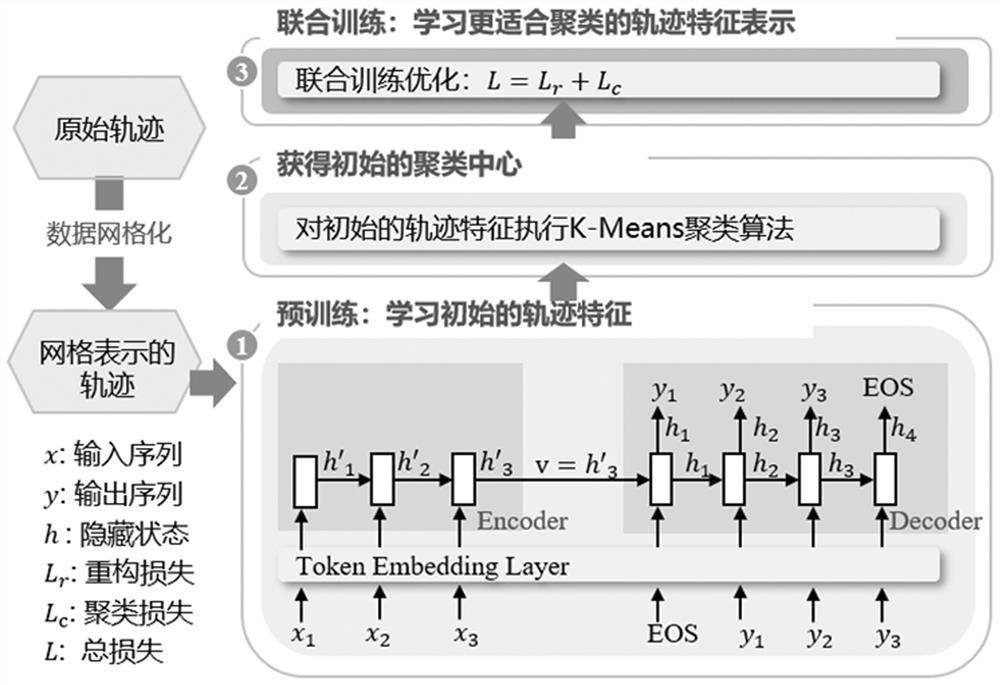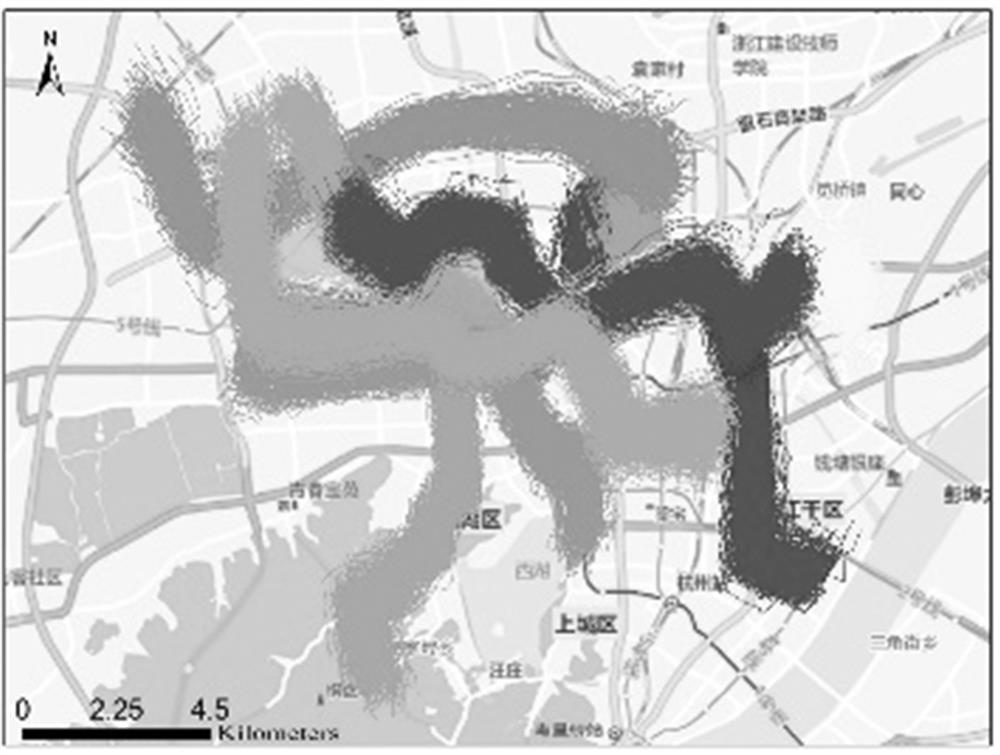Track sequence clustering method based on deep learning
A technology of sequence clustering and deep learning, applied to instruments, character and pattern recognition, computer components, etc.
- Summary
- Abstract
- Description
- Claims
- Application Information
AI Technical Summary
Problems solved by technology
Method used
Image
Examples
Embodiment Construction
[0034] In order to make the object, technical solution and technical effect of the present invention clearer, the present invention will be further described in detail below in conjunction with the accompanying drawings and embodiments.
[0035] Such as figure 1 As shown, a trajectory sequence clustering method based on deep learning of the present invention uses the nonlinear feature extraction ability of deep learning to sequence data to learn the feature representation of trajectory data and use it as a clustering object without using paired point matching methods Calculating the similarity between trajectories can not only obtain a fixed-length trajectory feature representation suitable for clustering, but also obtain clustering results end-to-end in the same framework. Specifically, it includes the following steps:
[0036] Step 1, first map the trajectory data points to the spatial grid, and then treat these grids as discrete markers in the sequence-to-sequence autoencod...
PUM
 Login to View More
Login to View More Abstract
Description
Claims
Application Information
 Login to View More
Login to View More - R&D
- Intellectual Property
- Life Sciences
- Materials
- Tech Scout
- Unparalleled Data Quality
- Higher Quality Content
- 60% Fewer Hallucinations
Browse by: Latest US Patents, China's latest patents, Technical Efficacy Thesaurus, Application Domain, Technology Topic, Popular Technical Reports.
© 2025 PatSnap. All rights reserved.Legal|Privacy policy|Modern Slavery Act Transparency Statement|Sitemap|About US| Contact US: help@patsnap.com



